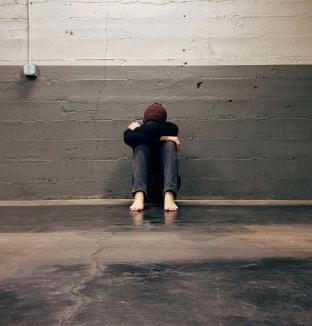Mental disorders: the hidden face of connected teenagers
According to data from the World Health Organisation (WHO)1, 1 teenager in 7 (aged between 10 and 19) suffers from a mental disorder worldwide. Suicide has even become the leading cause of death among 15-29 year-olds. How has our society amplified this silent crisis, and what practical solutions could improve the well-being of young people? Answers from Dr Frédéric Kochman, child psychiatrist and coordinator of the Lautréamont clinic in Loos (northern France).
A worrying rise in mental disorders among young people
Since 2020, the WHO has noted a two- to three-fold increase in the number of cases of mental disorders among young people worldwide. "In the clinics where I work, the number of requests concerning adolescents has doubled or even tripled," reports Dr Frédéric Kochman, a child psychiatrist and coordinator of the medical team at the Lautréamont clinic in Loos (Nord).
In France, the Centres Médico-Psychologiques (medical-psychological centers), which play an important role in the care of young people in distress, are saturated. Waiting times for suicidal teenagers can be as long as 2 years.
The health crisis and successive confinements have weakened the emotional and psychological balance of young people. For the most vulnerable, these periods of forced isolation have led to a fear of the outside world, also known as "cabin syndrome". Added to this was the general anxiety linked to the pandemic, an anxiety-inducing climate that was extremely destabilising for the most vulnerable.

The dream life of social networks and cyberbullying
Social networks play a central role in this crisis. A veritable distorting mirror, teenagers are confronted every day with images and videos of idealised lives that are often unattainable, fuelling a deep sense of unease. This is particularly true of teenage girls, who feel "less beautiful, less happy, less lucky", which can lead to depression.
At the same time, the omnipresence of screens reduces the time devoted to real social interaction, which is essential for their emotional development during this crucial period in their lives. Isolation in front of screens also encourages cyberbullying, a phenomenon that is on the rise. According to a study by the Audirep institute conducted in 20221 , 60% of 18-25 year-olds say they have experienced cyberbullying. "I have patients who receive messages of unbelievable violence at 2 in the morning. From then on, the harassment continues into their homes, even in the middle of the night. They can't sleep and their distress is compounded," laments Dr Kochman.
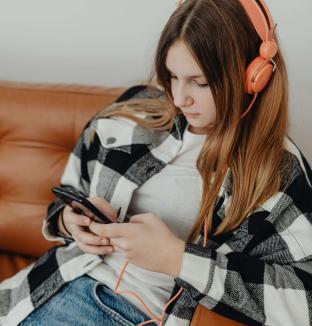
Switching off screens: the miracle solution to feeling better?
Some initiatives, such as the ban on smartphones in the classroom adopted in a quarter of countries worldwide2 , have not had the desired results, according to the OECD3. "The challenge is not to turn back the clock, but to reorganise everyday life to create more opportunities for sharing with family and friends," recommends Dr Kochman.
Rather than banning the use of social networks, the aim should be to promote more responsible use. "At our clinic, patients only have access to their phones for two hours a day. During the rest of the time, they rediscover activities such as sport, karaoke or board games. We also run therapeutic discussion groups called 'Reconnect' to help them take a step back from the dangers of using social networks," explains the child psychiatrist. The real challenge is to convince young people to a step back from the harmful effects of these networks and, above all, to diversify their activities and leisure pursuits.
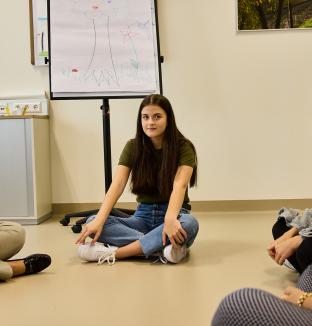
The family: finding the right balance
Parents, who are often at a loss, play a central role in their children's well-being. "They can introduce simple rules, such as banning the telephone from the bedroom at night, and show that there is a rich and fulfilling life beyond the screens," advises Dr Kochman
To achieve this, parents themselves need to reduce the amount of time they spend on their smartphones or watching TV series on their own, in order to recreate a bond with their children. "We put a lot of emphasis on family psycho-education: this can involve simple things like playing a board game, doing sport, sharing a meal while talking, or watching a series - but together - so that we can discuss it afterwards," he adds.
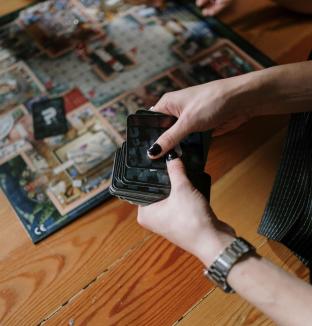
How can you spot a teenager in distress?
When adults notice a significant change in a young person's behaviour at school, at home or in social life, they need to be very vigilant. For example, a drop in school results, aggressiveness (or self-aggressiveness at home) or a lack of interest in groups of friends can be warning signs of depression. "First and foremost, I encourage parents to talk to their child about it. They're more likely to confide in you during a car journey - provided they take off their helmet - than in the middle of the living room, advises Dr Kochman. If you still have doubts, ask your family doctor for advice, so that he can refer your child to a psychologist if necessary."
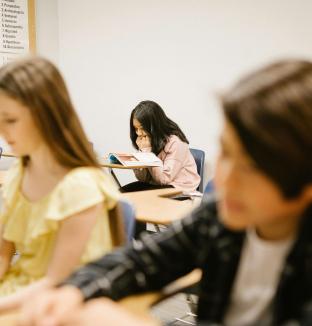
New therapies also help young people
Advances in neuroscience allow emeis clinics to deploy innovative mind-body therapies. Techniques such as EFT (Emotional Freedom Technique) and hypnosis help young people to release their emotions without having to verbalise them. EMDR (Eye Movement Desensitization and Reprocessing) is another highly effective method that uses eye movements to desensitise and reprocess trauma. Virtual reality is also an innovation worth testing, particularly to deal with phobias such as fear of school, by recreating classrooms virtually to work on these anxiety-provoking situations. The microbiota of adolescents also plays an important role."We now know that the intestine is our second brain. A better diet can therefore have a significant effect on mental health," stresses Dr Kochman, who advocates a holistic vision of mental health.
[1] https://e-enfance.org/plus-d1-jeune-adulte-sur-2-a-deja-ete-victime-de-cyberharcelement/
[2]Global Education Monitoring Report “Technology in education: a tool on whose terms?”: un rapport de l’Unesco (2023)
[3] PISA survey : un rapport de l’OCDE (2022)
Keep on reading...
To find out more about mental health, read our other articles on schizophrenia, treatment and OCD. Enjoy your reading!


